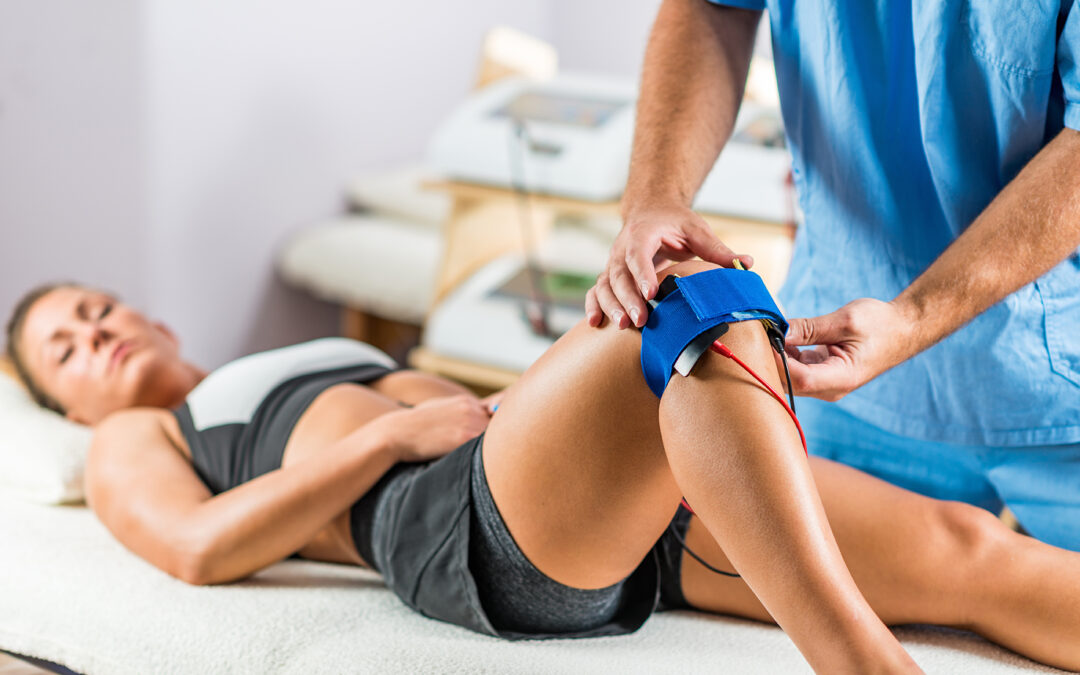Contents
Post-surgery rehabilitation can be a long and exhausting process. After a knee replacement surgery, physical therapy can play a crucial role in your recovery. Your physical therapist can help you manage symptoms and promote long-term healing. During this care, many patients wonder about the timeline. You may ask the question: “How long should I be in physical therapy after knee replacement?” There is not one definite answer to this question.
In reality, the length of your physical therapy rehab after knee replacement surgery can vary in duration. There are several determining factors. These include the type of surgery, your pre-surgical condition and any post-surgical complications. The specific length tends to vary significantly between patients. However, you can use the typical range as a general guideline. Physical therapy after knee replacement tends to take two to four months. After this period, you should still continue with your prescribed exercise regimen for a few months longer. This can help ensure that you make a full recovery. By staying engaged in your treatment, you can work to apply techniques that help promote healing. Your treatment plan will likely involve a range of techniques designed to expedite your recovery.
Top physical therapy treatment techniques after knee replacement surgery
- Strength training — Strength training refers to focused exercises that help build strength in weakened areas. After a knee surgery, the muscles around your knee joint may lose some strength. Weakness in this area can make it difficult to stand up and walk. With focused strengthening exercises, you can restore strength to the muscles around your knee. These include your quadriceps, hamstrings and calf muscles. Building strength in these areas can improve your joint stability. By stabilizing your joint, you can keep your knee better supported during the recovery process.
- Range-of-motion exercises — After surgery, it is common for your knee to feel stiff. You may experience difficulty when trying to fully bend or extend the knee joint. Gentle range-of-motion exercises can help restore your flexibility. Your physical therapist can guide you through stretches that target stiff muscles around the knee. Restoring flexibility after surgery can be an effective way to reduce stiffness and chronic pain.
- Balance and gait training — During the initial stages of recovery, you may be at a heightened risk for re-injury. This is because knee replacement surgery can have a negative impact on your balance and stability. After surgery, physical therapy can help you regain stability. Gait training is often key to injury prevention strategies during rehab. With help from your physical therapist, you can make adjustments to your gait and walking pattern that keep your knee supported.
- Joint mobilization — Joint mobilization is a manual therapy technique. This means it is a hands-on strategy employed by skilled physical therapists. Joint mobilization typically involves repeated slow and steady movements. By mobilizing your joint with their hands, your physical therapist can help reduce localized pain. Stiffness in the joint can also be alleviated through the mobilization. If you have scar tissue from surgery, manual therapy can be crucial to breaking it up and triggering healing in the tissue.
- Modalities — Physical therapy involves many tool-based modalities. Using innovative technology, your physical therapist can help optimize your treatment. Modalities that can help during your recovery include electrical stimulation and ultrasound therapy. Using these technologies, your physical therapist can help address any pain and muscle strain caused as a result of your surgery. In some cases, these modalities can help trigger natural healing processes. This can help quicken your physical therapy timeline after knee replacement surgery.
- Functional activities — Functional activities are the kind of tasks you do every day. Walking up stairs, picking up light objects and reaching for items on a shelf are some examples of functional activities. One goal of most rehab treatment plans is to restore your ability to accomplish basic functional tasks. As you make progress in your treatment, your physical therapist can incorporate functional exercises into your routine. These can simulate daily tasks and improve your ability to perform them. Engaging in this kind of exercise can help you prepare for a full return to your regular activities once you have recovered.
Find effective rehabilitative care at Lattimore Physical Therapy
Looking for top-notch physical therapy after your knee replacement surgery? Lattimore Physical Therapy can be an ideal choice. At Lattimore, our approach to rehab goes beyond your initial recovery. We also want to help improve your long-term health to reduce the chances of future injury in the same area. With a range of treatments available, we can help you work toward an optimal long-term outcome.
Contact our team today for more information or to schedule an initial appointment.



